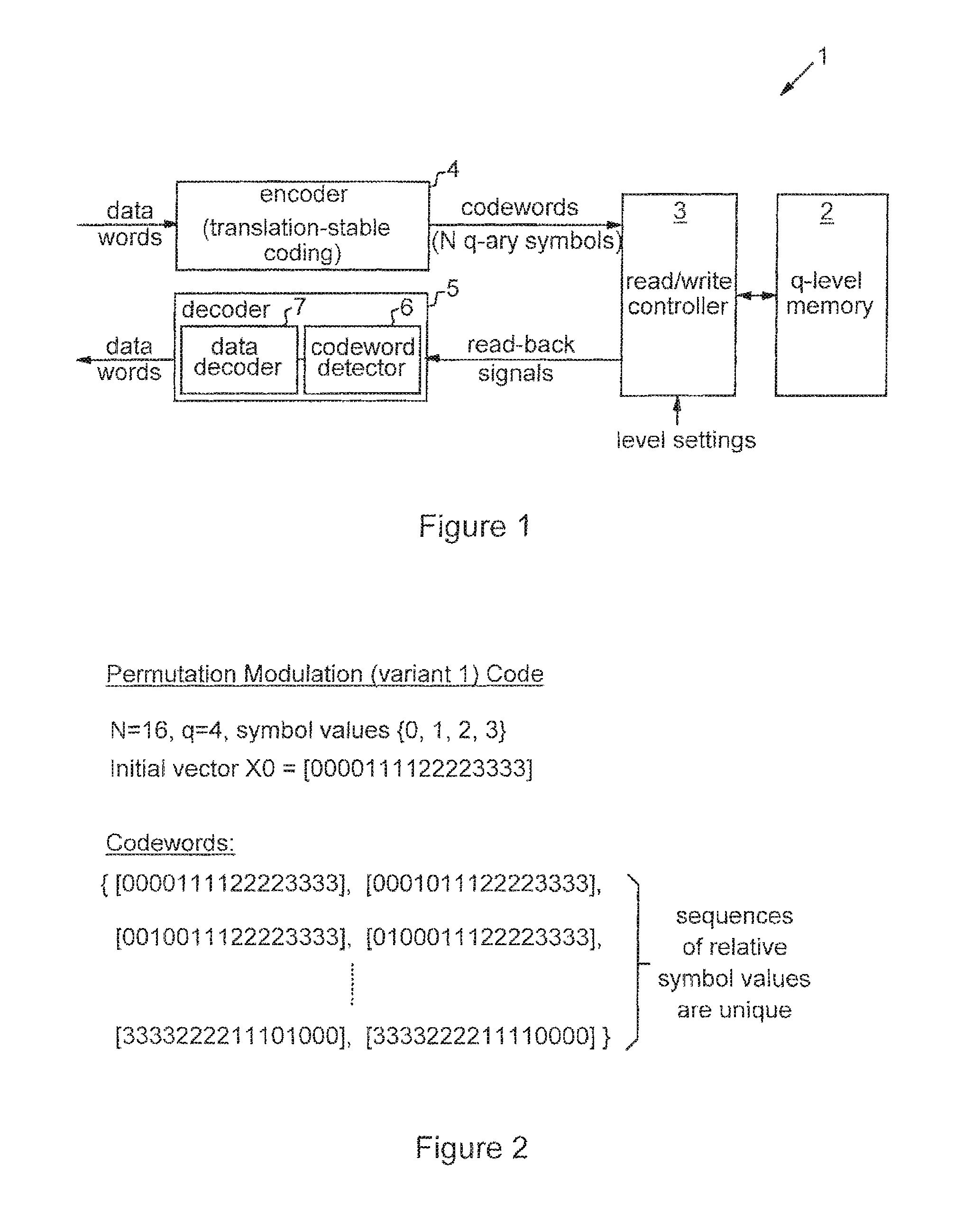Data encoding in solid-state storage devices
a data encoding and storage device technology, applied in the field of data encoding in solid-state storage devices, can solve the problems of short-term drift, solid-state memory technologies such as flash and pcm suffer from a phenomenon known as short-term drift, and manifest as a monotonous increase of the resistance of the stored cell level, and achieve high-efficiency effects
- Summary
- Abstract
- Description
- Claims
- Application Information
AI Technical Summary
Benefits of technology
Problems solved by technology
Method used
Image
Examples
Embodiment Construction
[0036]FIG. 1 is a simplified schematic of a solid-state storage device, here a phase-change memory (PCM) device 1, showing elements involved in the data recording / reproduction system to be described. The device 1 includes phase-change memory 2 comprising at least one array of q-level PCM cells. Reading and writing of data to memory 2 is performed by a read / write controller 3. The device includes an encoder 4 for encoding input data words into codewords which are output to read / write controller 3. A corresponding decoder 5, comprising a codeword detector 6 and data decoder 7, receives read-back signals from read / write controller 3 and recovers the original input data words.
[0037]Each of the PCM cells in memory 2 can store one of q levels, designated 0 to q-1 for simplicity here. Controller 3 sets a cell to a particular level by adjusting the resistance of the cell in known manner. In particular, levels 0 to q-1 correspond to respective values in a sequence of successively-higher resi...
PUM
 Login to View More
Login to View More Abstract
Description
Claims
Application Information
 Login to View More
Login to View More - R&D
- Intellectual Property
- Life Sciences
- Materials
- Tech Scout
- Unparalleled Data Quality
- Higher Quality Content
- 60% Fewer Hallucinations
Browse by: Latest US Patents, China's latest patents, Technical Efficacy Thesaurus, Application Domain, Technology Topic, Popular Technical Reports.
© 2025 PatSnap. All rights reserved.Legal|Privacy policy|Modern Slavery Act Transparency Statement|Sitemap|About US| Contact US: help@patsnap.com



